calsfoundation@cals.org
Earle (Crittenden County)
| Latitude and Longitude: | 35º16’30″N 090º28’00″W |
| Elevation: | 207 feet |
| Area: | 3.25 square miles (2020 Census) |
| Population: | 1,831 (2020 Census) |
| Incorporation Date: | March 25, 1905 |
Historical Population as per the U.S. Census:
|
1810 |
1820 |
1830 |
1840 |
1850 |
1860 |
1870 |
1880 |
1890 |
1900 |
|
– |
– |
– |
– |
– |
– |
– |
– |
– |
– |
|
1910 |
1920 |
1930 |
1940 |
1950 |
1960 |
1970 |
1980 |
1990 |
2000 |
|
1,542 |
2,091 |
2,062 |
1,872 |
2,375 |
2,391 |
3,146 |
3,517 |
3,393 |
3,036 |
|
2010 |
2020 |
|
|
|
|
|
|
|
|
|
2,414 |
1,831 |
|
|
|
|
|
|
|
|
Earle is an incorporated city in western Crittenden County located on U.S. Highway 64 near the border with neighboring Cross County. The history of Earle is really that of two towns—Earle and Norvell—which grew alongside each other for decades and were separated only by a boundary line running down present-day Ruth Street in Earle. Both towns arose as a result of the timber industry boom following the Civil War and shared most of the same civic and business leaders. In 1888, a railroad line through the southern part of Earle was established, which benefited Earle more than its smaller neighbor, as the route of the railroad bypassed Norvell entirely. Talks of merging the two towns lingered for more than sixty years until Norvell was formally annexed by Earle in 1978; prior to annexation, Earle shared municipal services and improvements with its smaller neighbor.
The town of Earle was named for English-born Josiah Francis Earle, who had land holdings in the area. Earle had served in the Mexican War and with the Arkansas militia and Confederate regular cavalry during the Civil War. Following the war, Earle was active in the Ku Klux Klan (KKK), and on one occasion in Memphis, Tennessee, he was rescued by Klansmen before he could be executed by hanging. Earle died in 1884 and left his considerable holdings to his wife and four children. When the railroad through Earle was built in 1888, Earle’s widow built a small depot to encourage trains to stop there; she named it for her late husband. The most recent train depot was built in 1922 and was abandoned when passenger and freight stops were discontinued in the 1960s; the old depot now operates as the Crittenden County Museum.
In 1918, an African-American farm worker named Elton Mitchell was hanged by a mob for allegedly shooting and wounding the wife of a prominent planter.
Dr. James Throgmorton was a Norvell physician who once documented the sheer abundance of timber in the area and described the then-sparsely-populated lands around Earle as a dense forest that was inhabited by bears, panthers, and wolves until the late 1880s. As happened with the rest of Crittenden County, this supply of timber brought rapid growth and prosperity to Earle and Norvell; access to the railroad and the Tyronza River west of town provided reliable modes of transportation. Timber-related firms that once operated in Earle and Norvell included the Tyronza Lumber Company, the W. G. English Saw Mill, the C. T. Whitman Lumber Company and Saw Mill, the Crittenden Lumber Company, the Boston Lumber Company, and the Earle Cooperage Company. Wynne (Cross County) businessman Luther Wallin moved to Earle in about 1900 and had extensive lumber interests throughout the area and three lumber mills in Crittenden County; his Earle sawmill closed in 1957 shortly after his death and was the last to operate in Earle.
Apart from timber businesses, Earle and Norvell both boasted hotels to accommodate railroad traffic. Ginning operations, a compress facility, and retailers emerged to serve the growing farm community as timber clearing began providing abundant farmland for the area. From its formal incorporation in 1905 until around 1940, Earle was the largest city in Crittenden County, and the self-described “Pearl of the St. Francis” was the center of industry for the area. This also established Earle as a destination for traveling circuses and carnivals in its earlier days. In 1908, Earle had a semiprofessional baseball team that played twice weekly, and, starting in the 1920s, the Earle Cardinals professional basketball team played and brought national acclaim for its exceptional five-year record of 204 wins in 221 games. Earle High School began playing football in 1920 and was the first school system in Crittenden County to field a team.
In 1928, a monument was built to memorialize George Berry Washington, a prosperous Black business man who began life as a slave; it is listed on the National Register of Historic Places.
Two schools served white students in the Earle area prior to 1919, when the Earle School District was established. The three-story brick structure that would later become Earle High School was built during this time and served as a junior-senior high school. Over the next several decades, Works Progress Administration (WPA) projects and other construction expanded the school until Earle’s School District occupied the three city blocks that it covers today. During this time, the district operated numerous “wing” schools that served Black students in Earle and in rural locations across the district. The primary Black school for the district was Dunbar High School, located just north of the Earle School District facilities attended by whites. Integration of the schools commenced in the 1960s, and the Dunbar School today serves as a middle school. Earle High School moved to a new facility on the east side of town in 1999; President Bill Clinton spoke at the dedication ceremony for the new school that same year.
Perhaps the most infamous chapter in Earle’s history occurred in 1936, when Earle town marshal Paul D. Peacher used the occasion of a strike by the Southern Tenant Farmers’ Union (STFU) to arrest Black men in Earle on bogus vagrancy charges. Earle’s mayor and acting justice of the peace Townsend S. Mitchell then put thirteen of the men Peacher arrested on “trial,” which was really no more than a sentencing; the men were found guilty of vagrancy and were sentenced to a fine and thirty days of labor on land worked by Peacher. This practice of debt repayment through peonage was common and had persisted in some places throughout the South since the end of the Civil War. The incident eventually came to the attention of the U.S. Department of Justice, and Peacher was found guilty in 1936 of violating an 1866 slave-kidnapping law.
In 1944, a prisoner-of-war (POW) camp was set up next to the railroad tracks on the eastern side of town to house incoming German POWs. The camp at one time housed nearly 300 prisoners, who were contracted out to local farmers for manual labor. Most of the prisoners of this camp were submissive, with only one (unsuccessful) escape attempt; more troublesome POWs, such as members of the Schutzstaffel (SS), were transferred to a POW camp in Marked Tree (Poinsett County). The camp at Earle closed in 1946. Two metal Quonset huts that were used as day centers for the camp still remain off Highway 118, just south of the new high school campus.
In 1970, Earle was the site of a two-day race riot over school conditions. A group of unarmed Black protesters were marching toward city hall to complain about inequality in segregated schools when a group of armed whites attacked them. This followed a student protest just a few days prior, during which black children had been arrested.
Earle was struck by a devastating tornado on May 2, 2008—part of a tornado outbreak throughout Arkansas and other Southern states; there were no fatalities, but four people were severely injured. Twenty-first-century Earle is a small agricultural community with some light manufacturing operations and retail establishments. In 2017, the local school district was taken over by the state after being classified as in fiscal distress; in 2023, it was no longer classified as being in financial peril but remained under state control due to academic shortfalls.
Community developer John Alfred Cooper Sr. was born in Earle in 1906. Nationally known painter Carroll James Cloar was born near Earle in 1913 and grew up in the area. Wilson Douglas Watson, who served during World War II in Iwo Jima, was awarded the Medal of Honor for his show of “courageous initiative” and his “valiant fighting spirit.” In 2022, eighteen-year-old Jaylen Smith was elected mayor after a runoff, becoming the youngest Black mayor in the United States.
For additional information:
Pritchett, Merrill R., and William L. Shea. “The Afrika Korps in Arkansas, 1943–1946.” Arkansas Historical Quarterly 37 (Spring 1978): 3–22.
Richards, Eugene. The Day I Was Born. Brooklyn, NY: Many Voices Press, 2020.
Rojas, Rick. “An Ailing Arkansas City Elected an 18-Year-Old Mayor to Turn Things Around.” New York Times, January 10, 2023. https://www.nytimes.com/2023/01/10/us/jaylen-smith-mayor-earle-arkansas.html (accessed January 11, 2023).
Thompson, Robert F., III. “The Strange Case of Paul D. Peacher, Twentieth-Century Slaveholder.” Arkansas Historical Quarterly 52 (Winter 1993): 426–451.
Venkataramani, M. S. “Norman Thomas, Arkansas Sharecroppers, and the Roosevelt Agricultural Policies, 1933–1937.” Arkansas Historical Quarterly 24 (Spring 1965): 3–28.
Woolfolk, Margaret Elizabeth. A History of Crittenden County, Arkansas. Greenville, SC: Southern Historical Press, 1993.
Adam Miller
Searcy, Arkansas
 Crittenden County Map
Crittenden County Map 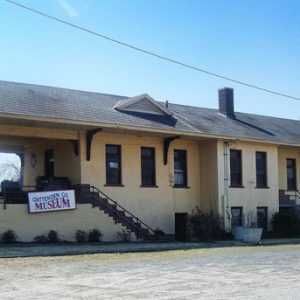 Crittenden County Museum
Crittenden County Museum  Crittenden Lumber Co.
Crittenden Lumber Co. 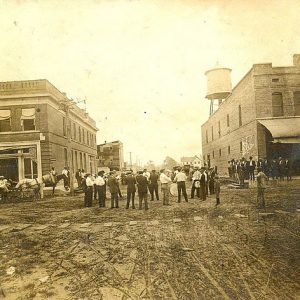 Downtown Earle
Downtown Earle 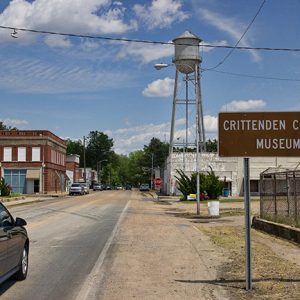 Earle Street Scene
Earle Street Scene 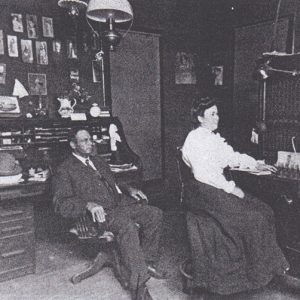 Earle Telephone Office
Earle Telephone Office 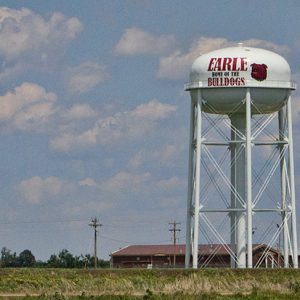 Earle Water Tower
Earle Water Tower  Earle Baptist Church
Earle Baptist Church  Earle Church
Earle Church  Earle Depot
Earle Depot  Earle Flood
Earle Flood  Earle High School
Earle High School  Earle High School
Earle High School 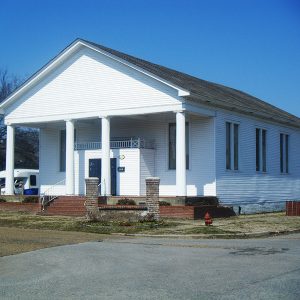 Earle Methodist Church
Earle Methodist Church 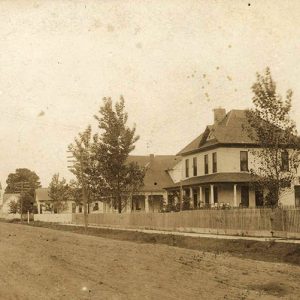 Earle Street Scene
Earle Street Scene 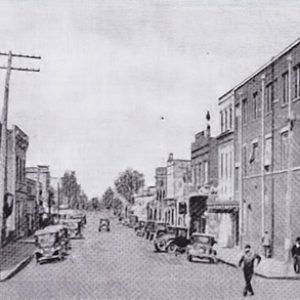 Earle Street Scene
Earle Street Scene 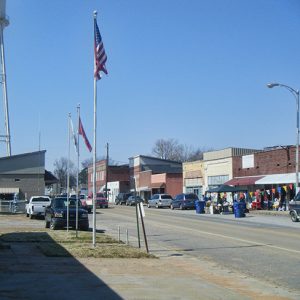 Earle Street Scene
Earle Street Scene 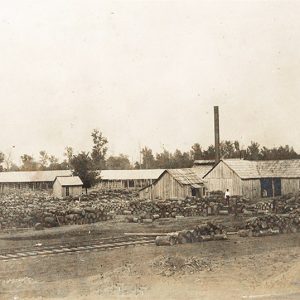 Lasater and Bailor Stave Mill
Lasater and Bailor Stave Mill  POW Camp in Earle
POW Camp in Earle 



God’s blessings to Earle and all the young entrepreneurs.
My book, Whatever happened to Mr. Goodbar, talks about subjects such as the search for my grandfather, Gibson Bayou Church, and Carroll Cloar, who my father went to the Lewis Schoolhouse with. Carroll became a famous artist and painted hundreds of paintings depicting the Earle area.